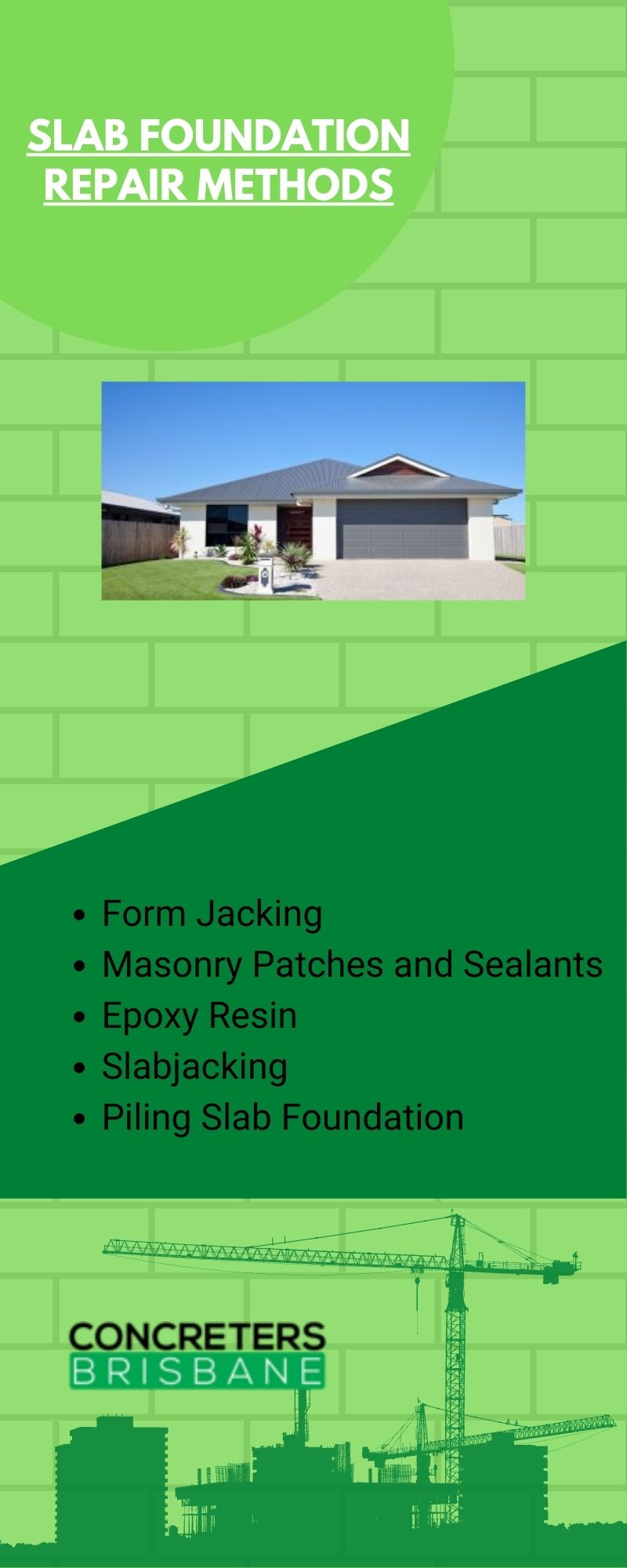Concrete slabs are very essential to the structural stability of a building. They are both used as the foundation for the ground floor and upper slabs that act as ceilings.
Causes of Cracks in Concrete Slab Foundation
It is very normal to experience cracks and shrinkage in slab foundations but this does not mean when you see a crack you ignore it.
Some of the cracks are brought about by weather and environmental changes to the structure.
Extreme weather changes may increase cracks in your slab foundation. This is due to exposure to elements and weathering.
Some soils have a large capacity of moisture absorbent and cause expansion which affects the slab foundation.
Faults during construction can also lead to heavy cracks in the slab foundation.
Slab Foundation Repair Methods
Below are some of the methods used to fix and repair slab foundations.
1. Form Jacking
Some problems occur due to the sinking or settling of slab foundations.
This is when polyurethane foam jacking can be used to repair the damage.
A checkerboard is created in the affected area, then holes are drilled into the slab injecting high-density foam under the foundation.
Once the injection is done, the foam expands and raises the concrete which fills the empty spots.
Most contractors use this method as it is cost-effective and very quick in terms of repairs. When using this type of repair you have to cross-check your plumbing for leaks.
The foam has a high level of expansion which can cause other damages to your plumbing and slab foundation.
2. Masonry Patches and Sealants
When shrinkage occurs in the corners of your concrete slab foundations, the use of masonry patches and sealant is highly recommended.
The shrinkage is said not to be a cause for alarm as they are not severe structural issues.
It’s however advised to repair them before they cause further damage to your structure.
Patches and sealants are found in the form of hydraulic cement which is similar to a mortar and hardens very fast when mixed. This will stop water and leaks in your foundation.
3. Epoxy Resin
Epoxy resin is similar to hydraulic cement sealant. This method of repair is recommended when your foundation has severe cracking.
Epoxy can be applied in two forms, you can decide to choose either a pourable or injectable form depending on the situation of the slab.
4. Slabjacking
For any foundation to be strong it needs to be compacted correctly to prevent the foundation from collapsing.
Slab jacking involves drilling holes into the slab then injecting the holes with a grout-like mixture that raises the concrete to the required level.
This process takes a few hours and can be done at any time regardless of the weather conditions.
5. Piling Slab Foundation
In foundation repairs, we have different types of piers or pilings to choose from. They are said to be invasive and provide long-term solutions to slab problems.

Below are some of the piers and pilings you can choose from.
Steel piers
They are used in permanent foundation repairs. They are strong and durable. This makes them go deeper than 100 feet into the ground.
Helical Piers
They have spiral-shaped heads which are screwed into the ground.
They penetrate through the hardest ground to a stable place which gives a strong foundation to the slab.
Bottom Line
Crack in concrete slabs can happen at any time and give you problems with your structure.
Some of the cracks can be minor and easy to fix while complex ones need a qualified team to fix.
